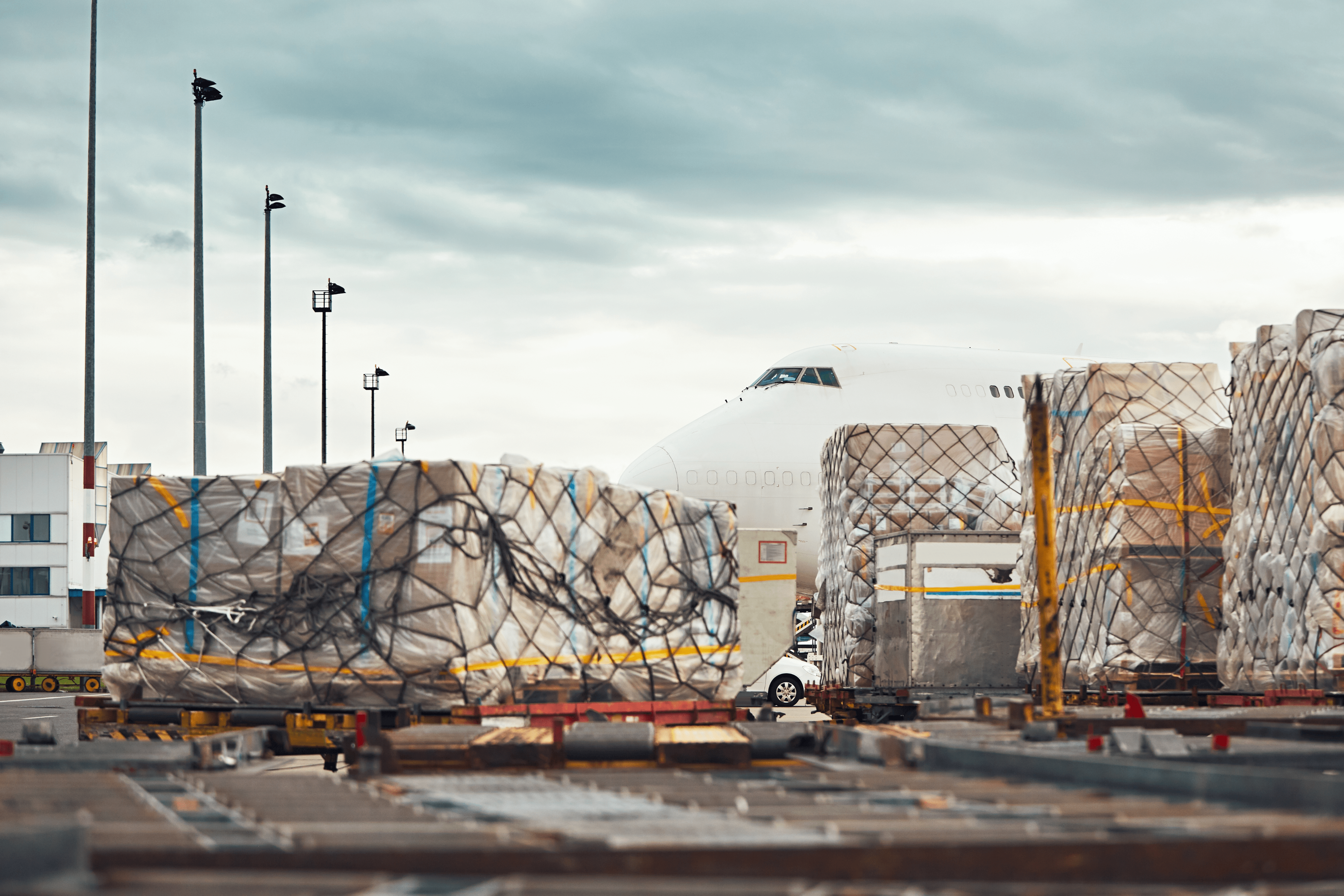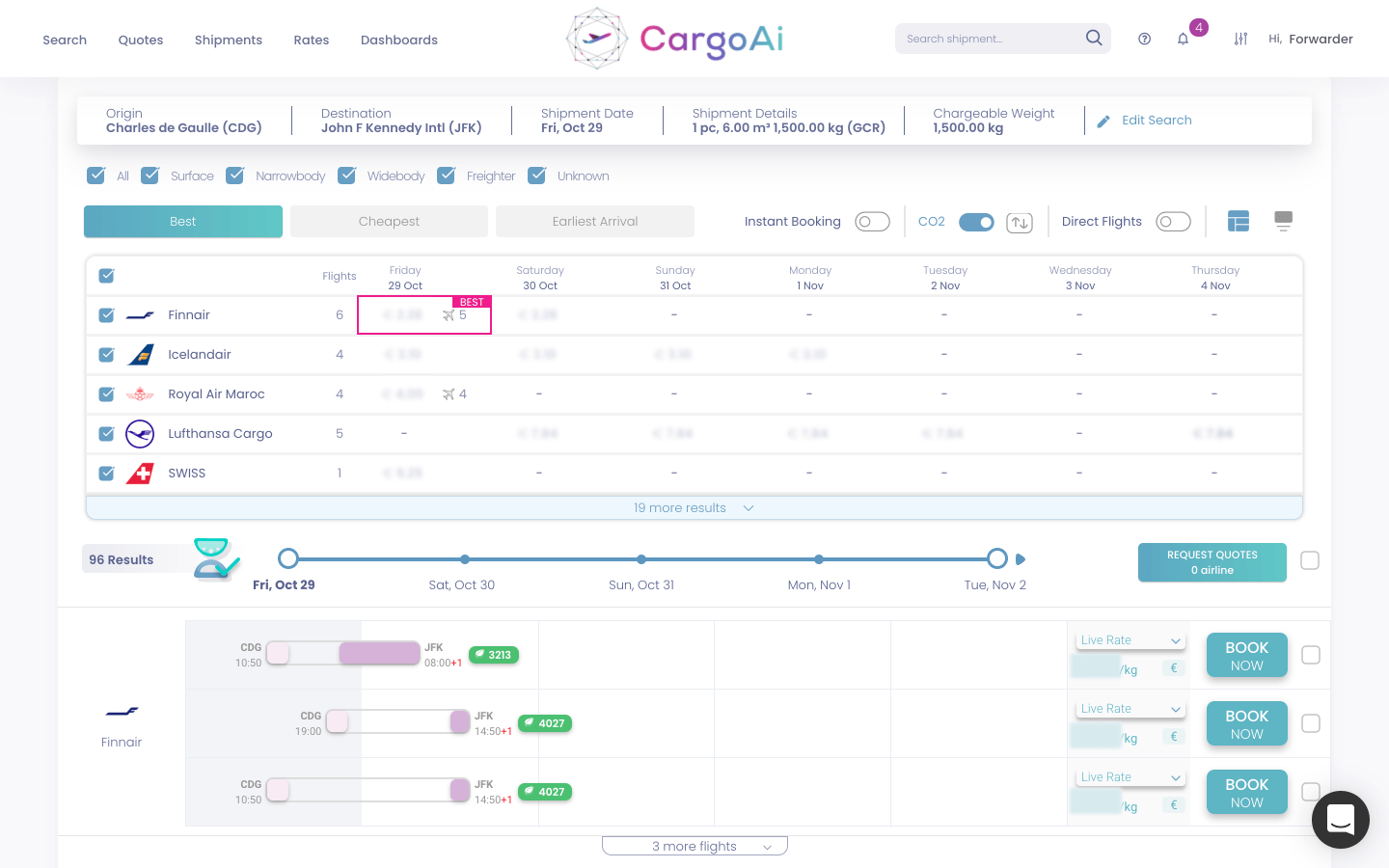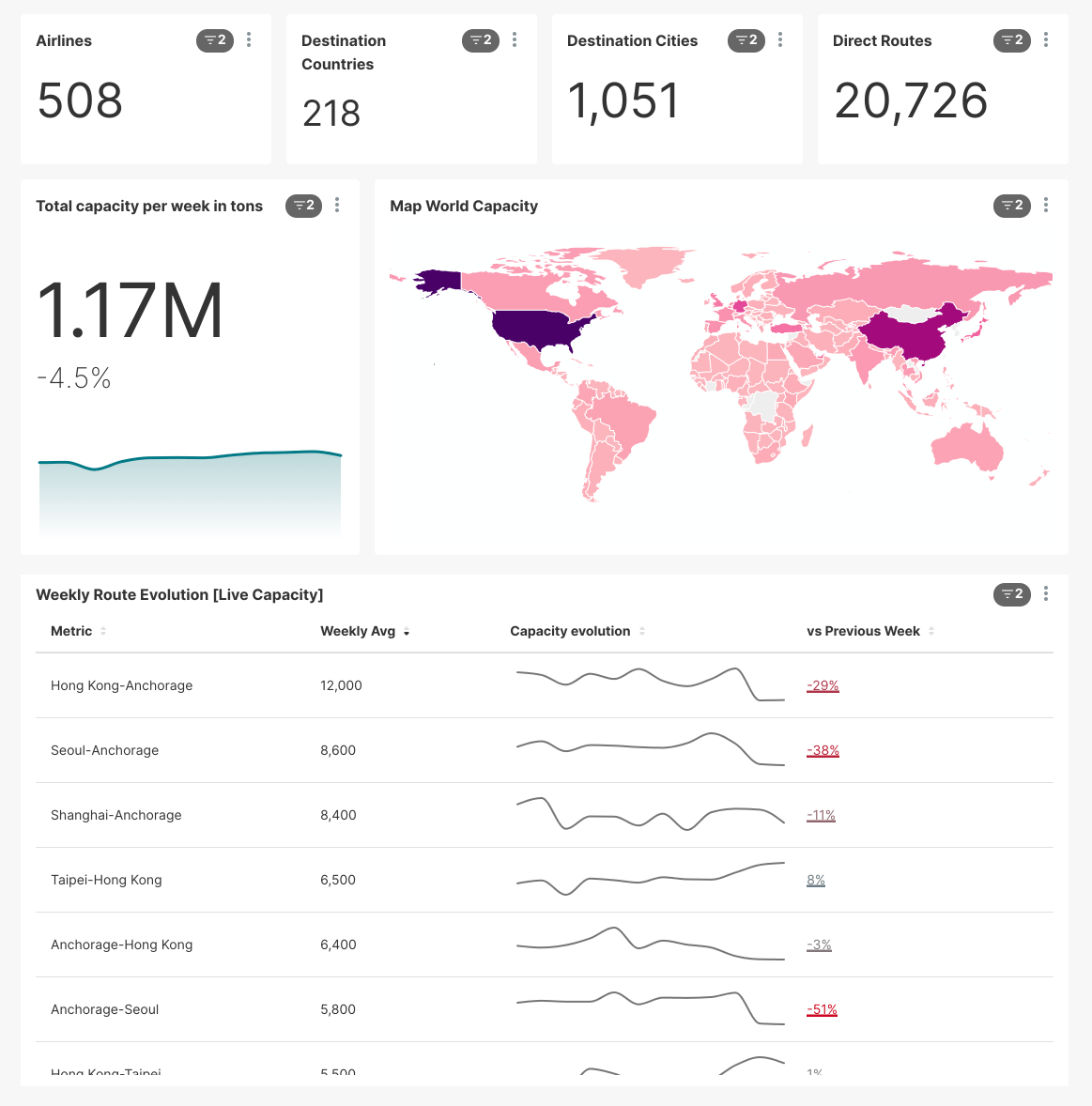
The pandemic has caused major disruptions in the air freight industry. Border restrictions have caused airlines to reduce their flight schedules for passenger aircraft due to a lack of travellers and impact on the crews. This resulted in a reduced Air Cargo transportation by lower deck of planes, which created an economic imbalance in which demand for cargo capacity far outweighs supply.
However, disruptions in Air Cargo represent only one piece of the complex supply chain crisis puzzle. The demand-supply imbalance was in fact the result of a variety of factors across all shipping routes. Above all, ocean bottlenecks, including blank sailings due to port congestion, which limits availability of vessel birth and unload cargo, which was itself partly caused and worsened by a shortage of truck drivers to transport the goods from the ports.
Finally, the straw that broke the camel’s back was a peak in demand for consumer goods driven by US and Europe emerging at the same time of disruptions in supply chains in China and South-East Asia caused by a surge in covid-19 cases. To have a better idea of the scale of the issue, as of 14 September 2021, 56 cargo ships were stuck off the California coast. The concern is now that some store shelves may be empty during the holiday shopping season, and President Biden announced a plan to run West Coast port 24/7 to ease delays.
These disruptions in maritime and road routes let forwarders look at Air Cargo for their shipments, and Airlines are feeling the heat, as some are unable to meet the demand with the available passenger aircraft. As a result, Air Cargo prices have been steadily increasing and with the impending peak holiday season, the already high air freight prices have now reached unprecedented peaks.
Today, the perfect storm is brewing in the air cargo industry and logistics providers are looking to get around the conundrum by finding new ways to help their shippers move their goods across borders. But the result is that forwarders are left with no other option than to compete for limited capacity, which means they are forced to move freight on premium spot rates. Most freight forwarders have historically relied on few carriers on their portfolio, which is now proving to be a major problem in the pursuit of finding alternative routes and last-minute solutions in a race to fill shelves before the holiday season.

As the freight market changes, international freight forwarders are finding themselves in a jam because they now have to explore other options for transporting cargo due to inadequate space and increased tariff on regular flights. The main challenge for today’s forwarders is finding flexibility in their daily operation and exploring new opportunities. Some forwarders are particularly struggling with accessing capacities beyond their airline's portfolio, and with limited carrier choice comes increased costs which in turn results in higher rates for their shipments.
Air freight forwarders require an overview of each airline’s details regarding transit route, journey time, commodity restriction, weight and dimension on aircraft limitations to help them sought for the best shipment options. The task of sifting through and determining what options each carrier offers becomes tougher because of the multiple options available. This leads most forwarders to only recommend their preferred airline partners as they might not be able to access additional information on each airline when it comes to carrier selection.

Freight forwarders being an essential part of the supply chain, provide the vital link between suppliers and end consumers which makes it essential for forwarders to put their clients' best interests first by offering them more airline selections. Searching, analysing, and comparing to and from hundreds of airlines can be complicated without the right tools and this is when air cargo search engines like CargoAi come into the picture, making it easy for freight forwarders to access all airlines on a single, universal booking platform. Equipped with this tool, forwarders can offer their clients a range of options, ensuring efficiency so that they are never stuck with overpriced airfreight rates.
With the abundance of carrier options, forwarders can have a competitive advantage in terms of offering their shippers more routing alternatives and air freight rates. From searching for available capacities and schedules on various airlines, comparing rates, requesting quotes, making booking requests, tracking shipments and utilizing the most CO2 efficient carrier, CargoAi’s comprehensive suite of solutions helps guide forwarders through this complex process and they can confidently choose the best carrier for their client. This boost in productivity helps the forwarders as the decision-making process is accelerated, manpower is reduced and the forwarders are sure to discover new lanes as they are directly connected to the airline cargo booking system.

The international travel market may seem like a grim place as many airlines still struggle to recover from the dip. But some airlines have found a way to keep afloat by turning cargo business into their darling and this industry is undergoing a big shift, with new players now able to compete with the traditional carriers. Leaner, more agile firms are in fact now posing a threat to larger companies since in today’s digital world, size doesn't matter, and bigger is no longer better.
Air cargo is not just a way to offset losses in passenger service, but it's also an incredibly profitable business. With fewer aircraft available to supply for cargo operations than ever before, airlines can either invest more into their own fleet or lease out aircraft for cargo charter. After all, why choose between losing market share and making profits?
Airlines that have found a way to provide a service that meets the needs of their customers will thrive. Those who struggle to adapt to the changing global landscape will be left behind while those that do, will take over the niche.
The aviation industry at large needs to look beyond the traditional routes to grow. Airlines are in need of a fillip to get it back on track and the market today is ripe with opportunities. They need to find new territories that will help them expand their customer base as the demand for capacities increases, while also meeting the demands of customers across all regions. Data analytics and marketing are two key components needed to overcome these challenges, and airlines can take advantage of both.
Let’s explore the first component: data analytics. Successful airlines have a deep understanding of the market they serve, and they rely on Business Intelligence (BI). Bigger airlines have traditionally held the best surpluses of information, thus having an advantage when it comes to decision-making. With this information available, they can get ahead of the curve with insights on trends, markets, competitors, but also to determine what's working, what's not, what's changing, or how new things are being introduced so that these new opportunities can be seized.

The best data can be your crystal ball. CargoAi stands out from other Business Intelligence tools because it has the latest air freight analytics compared to any others available in the market. This information can be used by airlines of all sizes to understand capacity trends, analyse conversions, customer churn rate, and optimize revenue. By understanding changing market trends in different regions and identifying gaps within specific geographic locations, airlines can choose to invest in more fleet to an existing region or add newer trade lanes where demand is surging.
Now let’s talk about the marketing aspect, and distribution in particular. It is widely recognized that airlines that want to ride the digital revolution trend need a modern approach in their marketing. It's no longer enough to focus on traditional media strategies, such as commercials, ads or using social media, but instead, they can touch new markets, create awareness, and even grow revenue through digital marketplaces.
Today, we see a growing number of airline companies are partnering with CargoAi to distribute rates and capacity worldwide. This multi-channel distribution strategy increases brand visibility while it opens the door to wider audience across different regions, that would have otherwise been inaccessible.
Airfreight capacity scarcity likely won’t be ending soon. It has taken the industry more than a year to get to the current situation of a “perfect storm”, so it’s safe to say that it may take just as long to return to normal. Every actor involved will have to embrace flexibility and seek alternative solutions to overcome the threats posed by the current shipping disruptions.